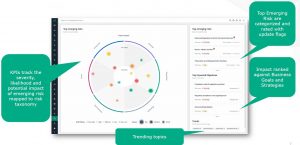Workplace safety is undergoing a significant transformation with an increasing global emphasis on psychosocial risks and hazards. Notably, factors like job stress and burnout have emerged as focal points, demonstrating direct links to employee absence, reduced productivity, and elevated turnover rates, all of which inevitably impact a company’s overall performance.
Regulations and standards
Regulatory bodies across the globe are actively responding to this paradigm shift. A noteworthy example is Safe Work Australia’s introduction of model WHS laws and guidance, aligning with the release of ISO45003:2021. This international standard provides comprehensive guidance on managing psychosocial risks and promoting well-being within the workplace. The introduction of model WHS laws sets the stage for individual states to issue regulations and enforce compliance.
Recent regulatory developments in Australia further underscore the gravity of psychosocial risks. New South Wales took a pioneering step by mandating that employers manage psychosocial risks on par with physical risks, a move swiftly followed by Victoria in September 2022 and Western Australia in December 2022. The Commonwealth jurisdiction came into effect on April 1, 2023.
The European Union (EU) is also at the forefront of addressing psychosocial risks. Member states like Sweden, Belgium and Denmark are aligning their approaches with the general preventative principles outlined in Directive 89/391/EEC.
Common psychosocial risks and hazards at work:
While it’s important to address psychosocial risks and hazards, organizations should not decrease their focus on physical dangers. For this reason, striking a balanced approach is necessary. The list of mental and social influences on the workplace includes:
- Job demands
- Low job control
- Poor support
- Lack of role clarity
- Poor organizational change management
- Inadequate reward and recognition
- Poor organizational justice
- Traumatic events or materials
- Remote or isolated work
- Poor physical environment
- Violence and aggression
- Bullying
- Harassment, including sexual harassment
- Conflict or poor workplace relationships and interactions
Identification of these risks can be difficult. They are often invisible and hard to measure, but nevertheless, organizations must establish robust policies, procedures and support mechanisms for employees navigating these challenges.
The question is, how do you set up these support systems for a safe working environment? To do this, you have to truly understand your workforce and EHS technology.
Identify the biggest psychosocial risk at your organization:
Stress, bullying and harassment are more visible psychosocial risks and hazards. Other risks can be more difficult to identify immediately, such as:
- A lack of awareness
- The stigma around mental health issues
- Limited resources
- Workload pressures
- Remote work
- Workplace-induced stress
How EHS technology helps manage psychosocial risks and hazards:
To proactively manage psychosocial risks and hazards, EHS professionals need an EHS platform that conducts robust risk assessments and drives accountability. EHS platforms can also help via incident tracking by capturing and recording incidents and near misses. Employers can get insights on injuries, investigations, and outcomes, all in one easy-to-use, central platform.
By streamlining compliance processes, facilitating employee surveys on workplace stress and promoting positive workplace cultures, EHS technology is an indispensable tool in enhancing productivity and ensuring regulatory compliance.
Revitalize your approach to workplace safety by proactively addressing both physical and psychosocial risks. Stay informed on regulatory shifts and leverage advanced EHS technology for effective risk identification and management. Cultivate a workplace culture centred on mental health, inclusivity, and strict compliance. Act promptly to create a workspace that prioritizes the well-being and productivity of your team, redefining workplace safety for a more resilient future.
This article was originally published by Evotix.






